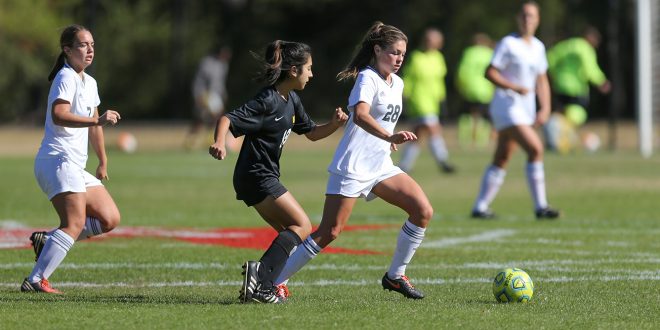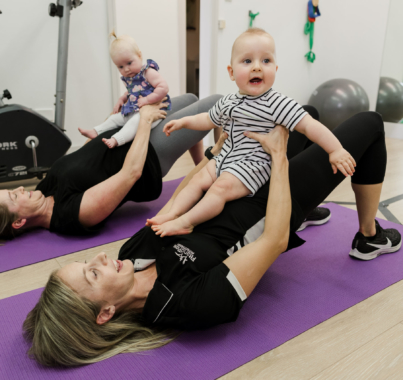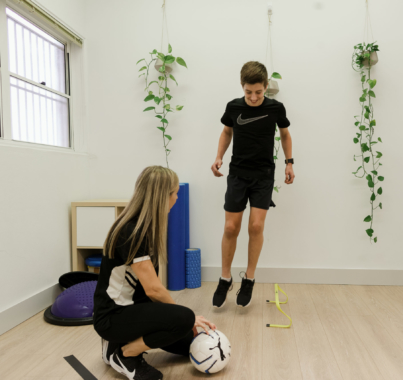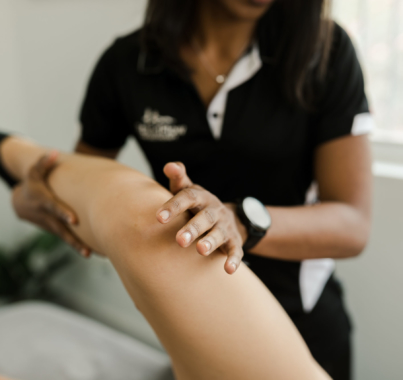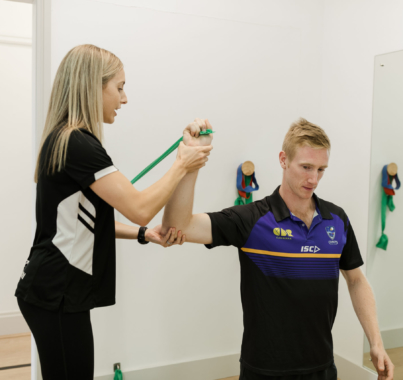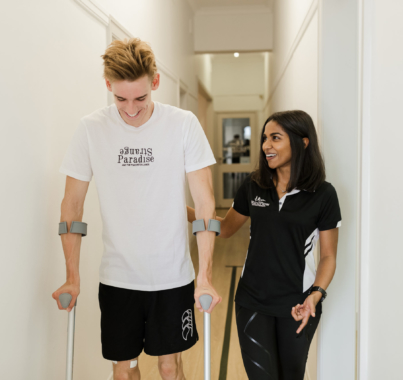Knee pain can generally be categorized into two types:
- Acute Injuries: These occur as a result of a specific incident or trauma. Acute injuries typically require early evaluation to determine the extent of the damage. This then may involve imaging or a referral to a specialist, and a rehabilitation program will be initiated to help you return to your activities as quickly and safely as possible.
- Chronic Injuries: These are conditions that develop gradually over time. While they may occasionally require imaging or consultation with a specialist, they usually benefit more from a tailored strength program and continuous management. With the right approach, you can manage these conditions effectively, minimizing pain and preserving your quality of life. Ongoing care is essential to ensure these issues don’t interfere significantly with your daily activities.

How can Physio help?
Physio’s are usually the first professionals people consult when experiencing knee pain. We have the expertise to evaluate your knee, identify the underlying injury or cause of pain, and determine the next steps. This may involve referring you for imaging or a specialist consultation, or initiating a rehabilitation program to address the issue.
Rehab will involve a period of relative rest and recovery.
Our aim is to keep you as active as possible while allowing your knee pain to settle. We will identify exercises you can do or make adjustments to your work, so you can continue working or participating in activities without exacerbating your knee pain.
Once pain has settled we then work on the strength, control and power to get you back to your former level of activity. We make your rehab specific to your goals. For example, getting back to a physical job might involve lifting and lunging type exercises, whereas returning to a sport like netball will involve running, change of direction, and powerful movements in the gym.
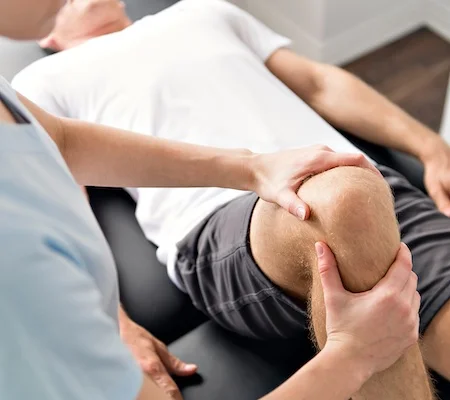
Delaying surgery
Discussions around surgery in both acute and chronic knee injuries are important to have.
Surgery increases an individual’s chances of developing osteoarthritis later in life, it also exposes you to risks such as infection, nerve damage and tissue scarring that could affect function. Whenever possible, it is recommended to explore rehabilitation options before considering surgery.
For acute injuries, most meniscus tears are typically managed with conservative treatment, and if addressed early, individuals can often return to their previous level of function. Additionally, recent research supports non-surgical rehabilitation for ACL injuries. New techniques are available to promote healing without surgery, and there is promising long-term data showing that effective function can be maintained over the years with non-operative approaches.
Physiotherapy plays a crucial role in non-surgical management, especially when structural knee stability has been compromised. It’s essential to ensure that functional stability is maintained through strengthening the muscles around the knee, improving neuromuscular control to avoid positions that could cause further damage, and enhancing muscle power if the individual’s goal is to return to sports.
In chronic conditions, surgery is usually only considered if function and quality of life are severely affected. This means that function is preserved for as long as possible before surgery becomes an option. To preserve function, strength and control are the main priorities.
There are several reputable resources backed by reliable research that offer exercises designed to help manage and slow the progression of knee arthritis. The primary goals are to enhance quality of life and reduce the need for surgery. Physiotherapists and exercise physiologists are specially trained in this field, making them valuable resources for managing and mitigating the impact of arthritis.
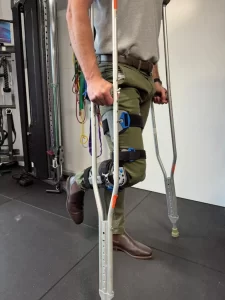
How rehab can fast track your recovery
The stronger your knee, the better it can handle various loads. Improved balance and control enables you to perform more complex movements without risking injury. Typically, an injury occurs when loads exceed the capacity of your muscles, joints, and tendons.
While the body can most of the time resolve inflammation and heal tissues on its own, there are strategies you can use to support and speed up this process. More importantly, there are strategies you can employ, to help strengthen your knee beyond the basic level needed for daily tasks, or the demands of sport, to enhance overall function and resilience.
Phase one:
Reduce pain, support healing
Physiotherapists employ techniques to help reduce pain and provide guidance on what to avoid to prevent aggravating the injury. They also offer recommendations on activities you can do to maintain strength and mobility, which can accelerate the rehabilitation process.
Phase two:
Physiotherapists can prescribe targeted exercises to strengthen the muscles and tendons around the knee, as well as improve neuromuscular control. This approach is crucial for preventing future injuries and reducing the risk of recurring pain.
Phase three:
Physiotherapists have the expertise to prescribe exercises tailored to the intensity and complexity of your chosen sport. This ensures a smooth and low-risk transition from rehabilitation back to athletic activities.
